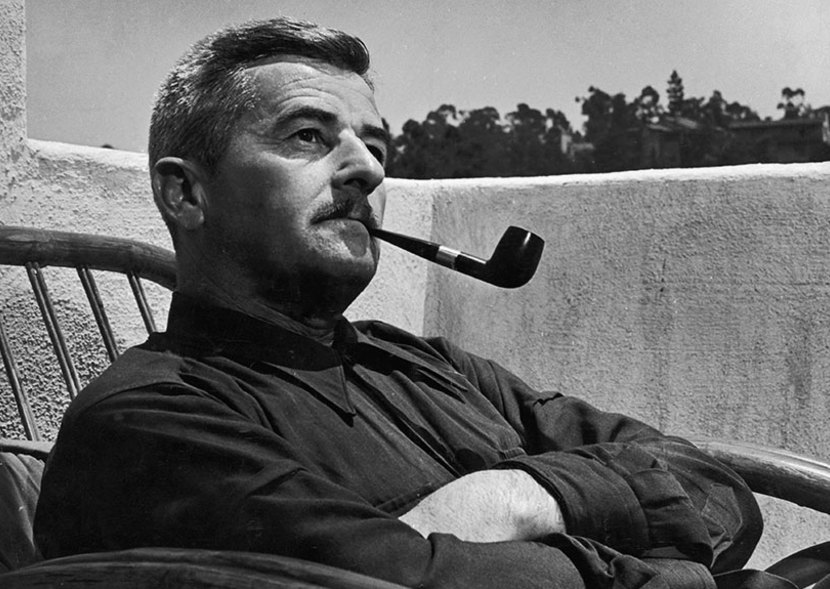William Faulkner is a towering figure in American literature. He is renowned for his complex narratives, innovative techniques, and vivid portrayals of the American South. His works have shaped modernist literature and Southern Gothic fiction. His writing style offers readers an unforgettable glimpse into human frailty, ambition, and resilience. In this blog, we delve into the best books by William Faulkner, unpacking their themes, storytelling techniques, and legacy.
Who Was William Faulkner?

William Faulkner was born in 1897 in New Albany, Mississippi. He is one of the greatest American writers of the 20th century. Growing up in the South deeply influenced his storytelling, as his works often grapple with themes of tradition, family, race, and the decay of the Old South. Faulkner’s literary genius earned him the Nobel Prize in Literature in 1949, two Pulitzer Prizes, and numerous other accolades. Despite his success, Faulkner’s dense and unconventional narratives continue to challenge readers, solidifying his reputation as a master of experimental fiction.
The Best Books by William Faulkner
Faulkner’s literary output is vast and varied, but a handful of his works stand out for their brilliance and enduring appeal. Here’s a closer look at his most celebrated novels.
1. The Sound and the Fury (1929)
The Sound and the Fury is widely recognized as Faulkner’s masterpiece. This groundbreaking novel tells the story of the Compson family’s decline through the perspectives of multiple narrators, including the stream-of-consciousness ramblings of Benjy, a mentally disabled character. Time and memory play a central role in the narrative, challenging readers to piece together the fragmented storyline.
The book’s exploration of family, pride, and loss, coupled with its innovative narrative style, makes it a cornerstone of modernist literature. It’s a challenging read but offers immense rewards to those who persevere.
2. As I Lay Dying (1930)
This darkly humorous and poignant novel follows the Bundren family’s journey to bury their matriarch, Addie, in her hometown. Told through 15 distinct narrators, As I Lay Dying captures the chaotic, absurd, and deeply human experiences of grief and family dynamics.
Faulkner’s use of multiple perspectives and internal monologues creates a layered and immersive reading experience. The novel’s brevity and wit make it an excellent starting point for those new to Faulkner’s work.
3. Light in August (1932)
Light in August intertwines the lives of several characters, most notably Lena Grove, a pregnant woman searching for her child’s father, and Joe Christmas, a man tormented by his mixed racial identity. The novel is a searing exploration of identity, race, and morality in the South.
Faulkner’s ability to weave these narratives into an impactful story underscores his mastery of storytelling. The novel’s commentary on societal judgment and human resilience remains profoundly relevant.
4. Absalom, Absalom! (1936)
Often hailed as Faulkner’s most ambitious work, Absalom, Absalom! chronicles the rise and fall of Thomas Sutpen, a man determined to build a dynasty in the South. The story is told through multiple narrators, each adding layers of complexity and subjectivity.
The novel delves into themes of ambition, pride, and the haunting legacy of slavery and racism. Its intricate structure and rich language make it a challenging but deeply rewarding read, cementing its place as one of Faulkner’s greatest achievements.
5. Sanctuary (1931)
In Sanctuary, Faulkner ventures into the realm of crime fiction with a dark and gripping tale of corruption, violence, and morality. The novel follows Temple Drake, a young woman caught in a web of crime and exploitation.
While the book was written with commercial success in mind, it retains Faulkner’s signature depth and complexity. Sanctuary shocked readers upon its release and remains a compelling exploration of human depravity.
6. Go Down, Moses (1942)
This collection of interconnected stories revolves around the McCaslin family and the history of their land in Faulkner’s fictional Yoknapatawpha County. Go Down, Moses explores themes of inheritance, race, and man’s relationship with nature.
The book’s most famous story, The Bear, is a powerful meditation on the loss of innocence and the impact of human actions on the natural world. It showcases Faulkner’s ability to blend lyrical prose with profound themes.
What Makes William Faulkner’s Work Unique?
Faulkner’s writing is characterized by its complexity, depth, and innovation. His use of stream-of-consciousness, non-linear timelines, and multiple narrators broke literary conventions and pushed the boundaries of storytelling.
At the heart of his work is a deep exploration of the human condition. Faulkner delves into themes like guilt, family legacy, social inequality, and the passage of time. His ability to create vivid, flawed characters set against the backdrop of a decaying South makes his stories timeless and universal.
How to Approach Faulkner’s Books
For many readers, Faulkner’s dense prose and experimental style can be intimidating. Here are a few tips to navigate his works:
- Start with Shorter Novels: Begin with accessible works like As I Lay Dying or Intruder in the Dust before tackling more complex novels like Absalom, Absalom!.
- Read Slowly: Faulkner’s writing rewards careful reading and re-reading. Take your time to absorb his rich language and intricate storytelling.
- Use Study Guides: Annotated editions and literary analyses can provide valuable insights into his themes and techniques.
- Embrace the Challenge: Don’t be discouraged by his complexity. Faulkner’s works are meant to be savored and contemplated.
Conclusion
William Faulkner’s novels stand as some of the most important works in American literature. From the profound depth of The Sound and the Fury to the gripping themes of Absalom, Absalom!, his works continue to inspire and engage readers.
By exploring Faulkner’s best works, you’ll not only gain a deeper appreciation for his genius but also uncover timeless stories that resonate across generations.
